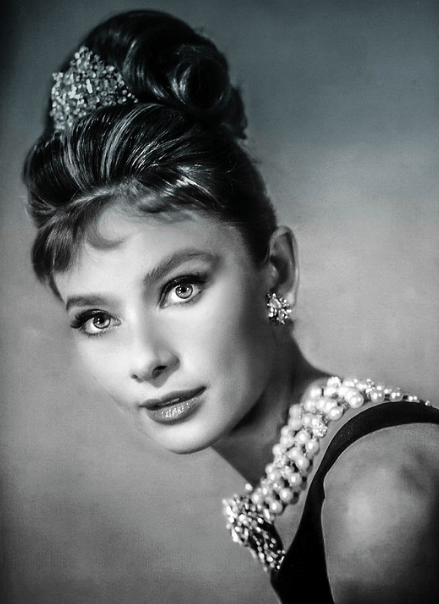In the 1960s, fashion grew progressively more casual across all ages and genders. Womenswear followed observed three broad trends: a follow-up of the prior decade’s ladylike elegance, the Space Age influence and the youthful styles of Mary Quant, and the “hippie” style of the late 1960s. Menswear saw a rising amount of pattern and color, new fashion icons in the form of rock stars, and military influence.
WOMENSWEAR
Broadly classified, there were three main trends in womenswear in the 1960s:
- The ladylike elegance passed on from the past decade.
- The youthful, fun designs that Swinging London popularized
- The late 1960s Eastern-influenced hippie styles.
Alongside these distinct styles, there came a shift in how women shopped and for whom the styles were designed.
In the early years of the 1960s, fashion continued following the pattern of the 1950s. Suits, skirts, and coordinating accessories were highlighted as one decade transitioned onto the next. Swinging London, a cultural phenomenon, started in 1955 but peaked in the early to mid-1960s. It was a phenomenon focusing on youth, spotlighting fashion and music. It brought the world Twiggy, The Who, and The Beatles and the miniskirt. Mary Quant was the designer who led the path in the “youthquake.” Quant opened Bazaar, her first shop in 1955 on the King’s Road in Chelsea, London. Her colorful, simple designs appealed to young people and teenagers who had more disposable income than previous generations. It diverged from the stuffy styles of the older generation and attracted young women who adopted the child-like styles produced by Quant.
The Bazaar was the new boutique-style, a revolutionary new approach to shopping that differed from the traditional department store and designer atelier. Aside from the accessibility of clothes in the store, boutiques also produced a frenetic atmosphere.
Among the most revolutionary designs credited to Quant were the minidress and miniskirt. Shunning the demure below-the-knee skirts of the late 50s and early 60s, young women wore skirts that hung at the upper thigh by the mid-sixties. Like the 1920s short skirts, the miniskirt startled but was also a trendy look for young women. Parisian designers adopted minidresses and miniskirts as Quant and her contemporaries proceeded to gain popularity.
Accompanying the miniskirt came a rage for focusing on scientific progress and the playful, innovative usage of new materials. Newly developed materials like shiny PVS, acrylics, and polyesters were used in women’s clothes while pop art and space inspired designers. By the late 60s, while the miniskirt approached its climax mid-decade, a new culture style emerged. Skirts slipped back to mid-calf, and the full-length maxi skirt had appeared by 1969, which came with the transition towards the “hippie” aesthetic.
The hippie movement and “Mod” movement, to which Mary Quant contributed, were an element of a new “street style” model in which fashion is propagated from the streets up to the designers instead of the other way around.
MENSWEAR
Just as womenswear grew more colorful and casual throughout the 1960s, so did menswear. While menswear started transitioning towards a more casual style in the 50s, the frantic energy of Swinging London saw its way with bright colors and prints for men. The change was impressive, as there hadn’t been very much progress in men’s fashion for over a millennium.
Where the mid to late 50s saw a growth in the demand for Italian style suits with narrow striped ties, menswear slowly incorporated brighter patterns and color, and ties started widening again as the decade advanced.
By the mid-60s, even the suit itself saw changes. Bold young men wore brightly patterned or striped suits, and even the jacket and trousers didn’t get away from new styling.
Even who inspired men’s style was changing: when movie stars had been the main style icons since the 30s, rock stars like Jimi Hendrix, Mick Jagger, and The Beatles, among others, became the chief influence on me’s fashion.
From the mid-60s, military elements influenced men’s fashion, with several of the rock influences adding to its popularity. Partially in thanks to this style, army-and-navy secondhand stores, and surplus clothing stores grew popular in the late 60s. Menswear, like womenswear, saw an influence from space, with Pierre Cardin also creating futuristic clothing for men.
In the late 1960s, menswear, like women’s fashion, turned to secondhand shopping and Eastern influences. Rejecting the synthetic materials and consumerism of the earlier portion of the decade, men started wearing vintage clothes, particularly those from the 30s and 40s. This signified that men’s suits begun widening again, as they had in the 1930s and 1940s. George Harrison was one of the first to adopt the style, and the boutique shop Granny Takes a Trip’s boldly patterned suit jacket he donned in the mid-60s foretells the style to come. Loose-fitting shirts, velvet vests, and tie-dye were all a fraction of the men’s hippie look in the latter part of the 60s while color remained front and center. As the 1960s transitioned into the 1970s, jeans, flared trousers, and long hair were popular men’s styles.
